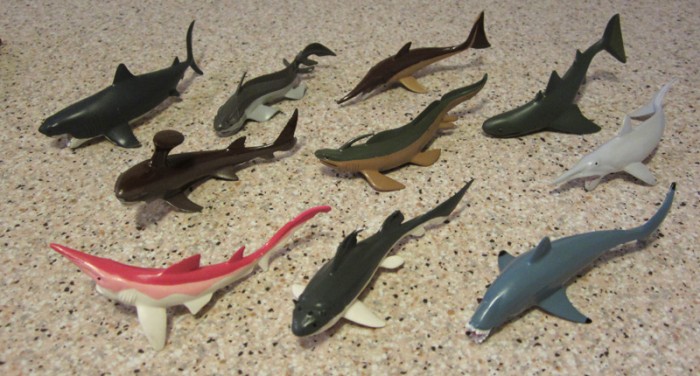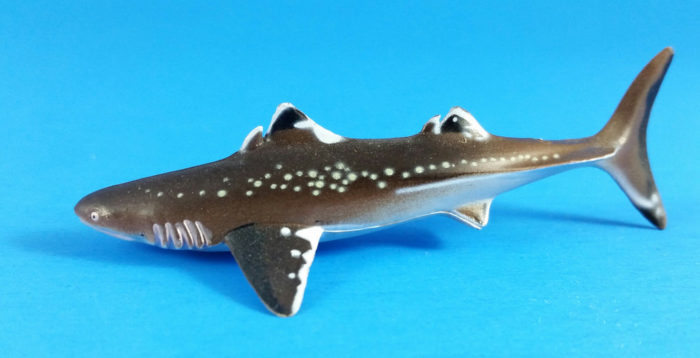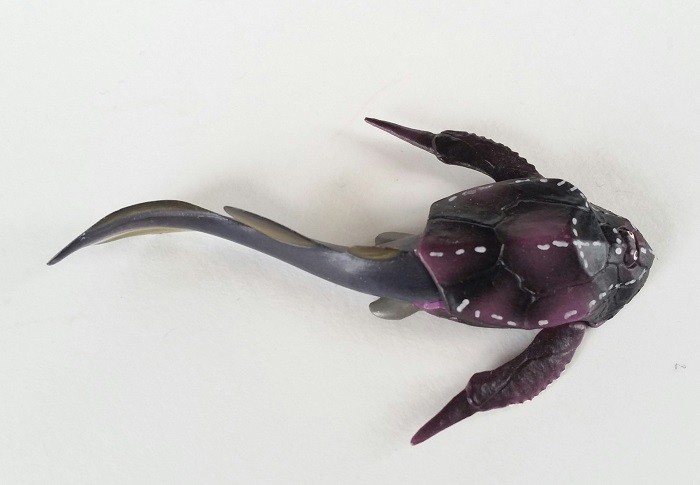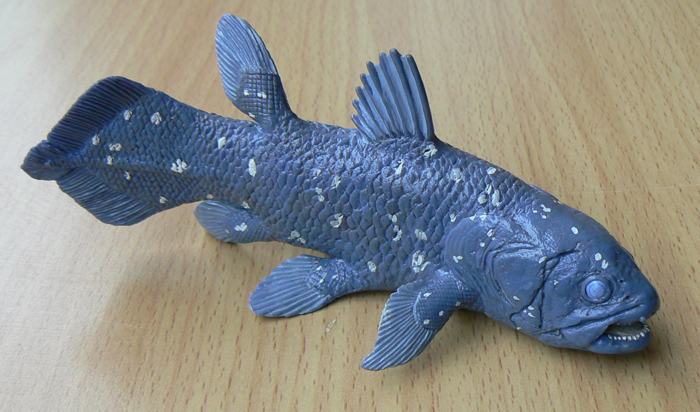Review and photos by Tim Sosa, edited by Suspsy
It isn’t often that a toy company offers us a prehistoric fish, but when they do, it’s usually Dunkleosteus. Small wonder, since this gigantic arthrodire was imposing and distinctive, reaching 8 meters in length.
Classification: Fish
Review: Encyclopedia of the Paleozoic (Kaiyodo Capsule Q Museum)

4.7 (12 votes)
Review and photos by Tim Sosa, edited by Suspsy
The interval of Earth’s history which shows fossil evidence of animals is known as the Phanerozoic Eon (literally “visible animals”). The Phanerozoic is divided into three Eras. We live in the Cenozoic, which was preceded by the Mesozoic (during which dinosaurs were the largest terrestrial animals).
The interval of Earth’s history which shows fossil evidence of animals is known as the Phanerozoic Eon (literally “visible animals”). The Phanerozoic is divided into three Eras. We live in the Cenozoic, which was preceded by the Mesozoic (during which dinosaurs were the largest terrestrial animals).
Review: Bothriolepis (Paleozoo)

4.3 (6 votes)
The Dinosaur Toy Blog is more active than it has ever been. This year, to date, we’re averaging a review every day – January 2016 was our most prolific month ever with 30 reviews in as many days. For this I can take no credit but must instead extend my sincerest gratitude to the many blog authors and guest reviewers who have kept the blog full of life, as events in my own life (work and more work) make it increasingly difficult to find the time to contribute reviews myself.
Review: Bothriolepis (Kaiyodo)
Review: Leaps in Evolution (Kaiyodo)

4.6 (17 votes)
Review and photographs by Tim Sosa
From July-October 2015, the National Museum of Nature and Science in Tokyo hosted an exhibit called “Leaps in Evolution: Tracing the Path of Vertebrate Evolution.” To commemorate the exhibit, Kaiyodo made a set of five vending machine capsule figures, most representing a stage in the evolution of vertebrates.
From July-October 2015, the National Museum of Nature and Science in Tokyo hosted an exhibit called “Leaps in Evolution: Tracing the Path of Vertebrate Evolution.” To commemorate the exhibit, Kaiyodo made a set of five vending machine capsule figures, most representing a stage in the evolution of vertebrates.
Review: Ducabrook Rhizodont (Yowie)

4.3 (7 votes)
Review and photographs by Tim Sosa
Yowie is a Perth-based company that markets nature-themed toys in little chocolate eggs. These days they have some extant animals that you can buy at places like World Market (at least in the United States), but around a decade ago they had an Australia-only line of prehistoric figures called Lost Kingdoms.
Yowie is a Perth-based company that markets nature-themed toys in little chocolate eggs. These days they have some extant animals that you can buy at places like World Market (at least in the United States), but around a decade ago they had an Australia-only line of prehistoric figures called Lost Kingdoms.
Review: Dunkleosteus (Favorite Co. Ltd)

5 (11 votes)
Review and photographs by Tim Sosa
In the Devonian period, the largest animals were arthrodires, huge armored fish informally referred to as placoderms. ‘Arthrodire’ means “joint-necked,” referring to the fact that there was a hinge in their armor between the thorax and the back of the head.
In the Devonian period, the largest animals were arthrodires, huge armored fish informally referred to as placoderms. ‘Arthrodire’ means “joint-necked,” referring to the fact that there was a hinge in their armor between the thorax and the back of the head.
Review: Megalodon (Wild Safari by Safari Ltd.)

2.2 (17 votes)
MEGALODON! The undisputed monarch of all sharks. Possibly the largest and most powerful flesh-eating animal to ever inhabit Earth’s seas. Star of cheesy novels, cheesier made-for-TV movies, and even cheesier pseudo-documentaries. And surprisingly enough, underrepresented in the world of prehistoric toys. For a long time, the proper scientific name for this animal was Carcharodon megalodon, however, it has recently been reclassified as Carcharocles megalodon.
Review: Pteranodon (Playmobil)

3.6 (8 votes)
From his perch atop the tree, a Pteranodon sights a fish swimming in a pond. Quickly he spreads his wings, swoops down, and snatches it in his bill!
It’s virtually unthinkable for a dinosaur toyline not to have at least one pterosaur and Playmobil has gone with that most familiar of flyers, Pteranodon.
Review: Prehistoric sharks (Toob by Safari Ltd)

4.6 (14 votes)
The Dinosaur Toy Blog has been quiet in recent weeks. As for me, I’ve been distracted by my involvement in the new Animal Toy Forum, which was launched recently as a partner site to the dinotoyblog and forum. However, I’ve neglected the blog for too long and so it’s time for me to turn my attention back to prehistoric animal reviews.
Review: Coelacanth (Wild Safari Prehistoric World by Safari Ltd)
Review: Cladoselache (Kaiyodo series 1)

4.6 (18 votes)
Edited by Dinotoyblog, photos by Halichoeres
Ah, Cladoselache. The first shark! How exciting. Up for review today is the first rendition of the first shark, made by Kaiyodo.
Ah, Cladoselache. The first shark! How exciting. Up for review today is the first rendition of the first shark, made by Kaiyodo.
Cladoselache is believed to be a very agile and swift predator – this is very well represented in this replica.






